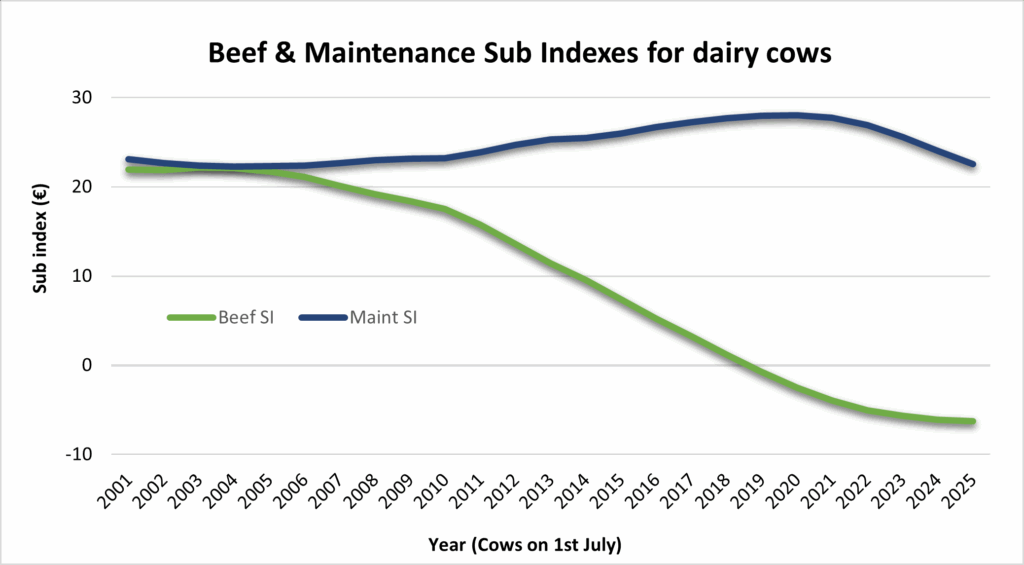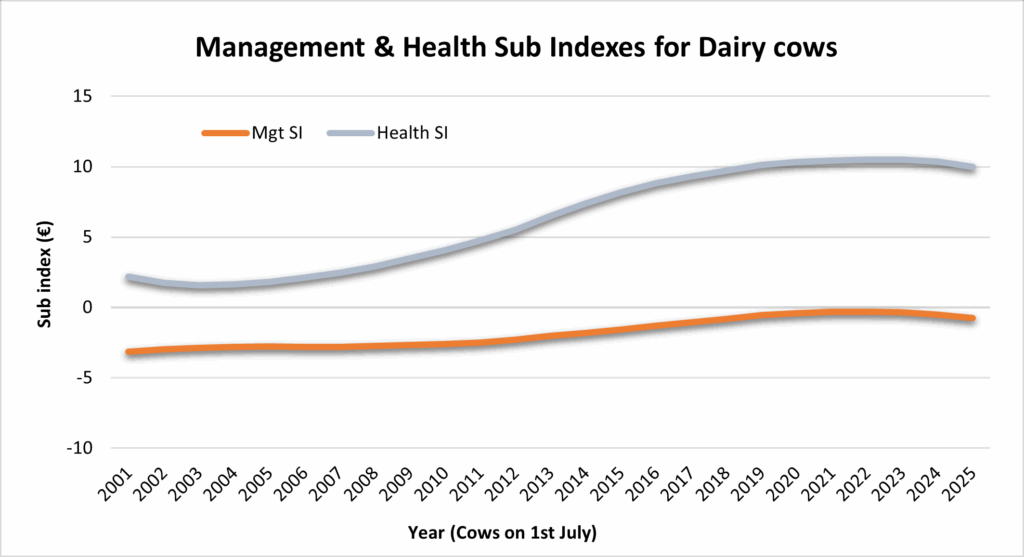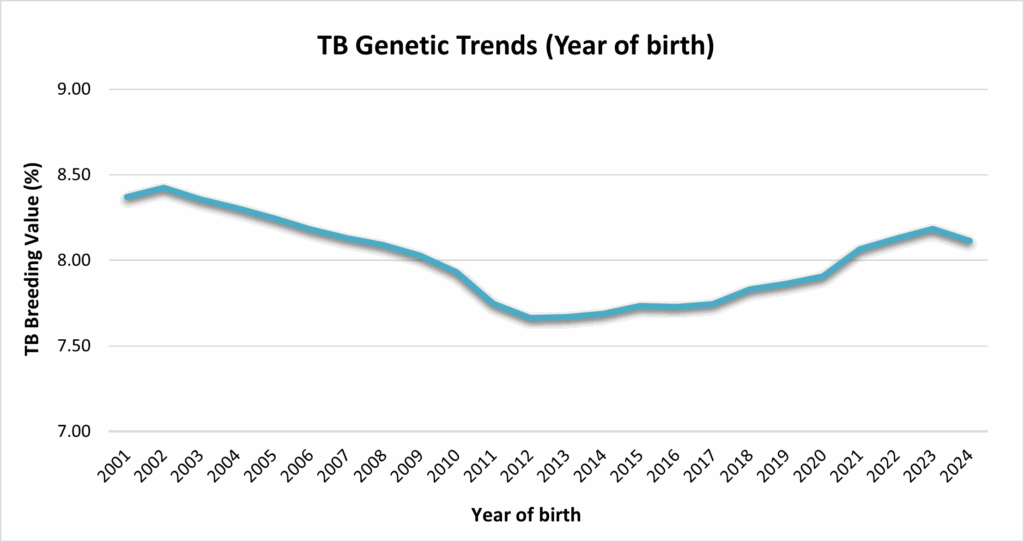What are the latest genetic trends in the Economic Breeding Index (EBI) following the recent updates implemented in the September 2025 evaluation?
The rate of genetic gain in EBI has accelerated rapidly over the last number of years. The latest analysis carried out shows the current annual trend in the EBI is €11.65/year. To support year on year comparisons between years, the genetic indexes are based on the number of dairy cows on dairy herds on the 1th July each year and are calculated from the September 2025 evaluation. The nationwide increase in genetic gain has obvious benefits, most notably the increased profit per lactation. Every €1 increase in EBI leads to a €2 increase in farm profit.
Graph 1. shows the average EBI and the Milk and Fertility Sub Indexes for dairy cows, highlighting the genetic improvements made in the national herd over the last 20 years. Following the introduction of the Gene Ireland programme and genomic selection in 2005 and 2009 respectively, the trends for milk and fertility improved significantly, with both the Milk and Fertility Sub Indexes increasing simultaneously and at an equal rate. Prior to this, the milk production was increasing while fertility was declining. In 2025, the average EBI of dairy cows is €188 higher than it was 20 years ago, translating to an additional €376 per lactation for cows calved this year compared to those in 2002. This genetic improvement has significantly helped farmers breed more efficient and sustainable animal.
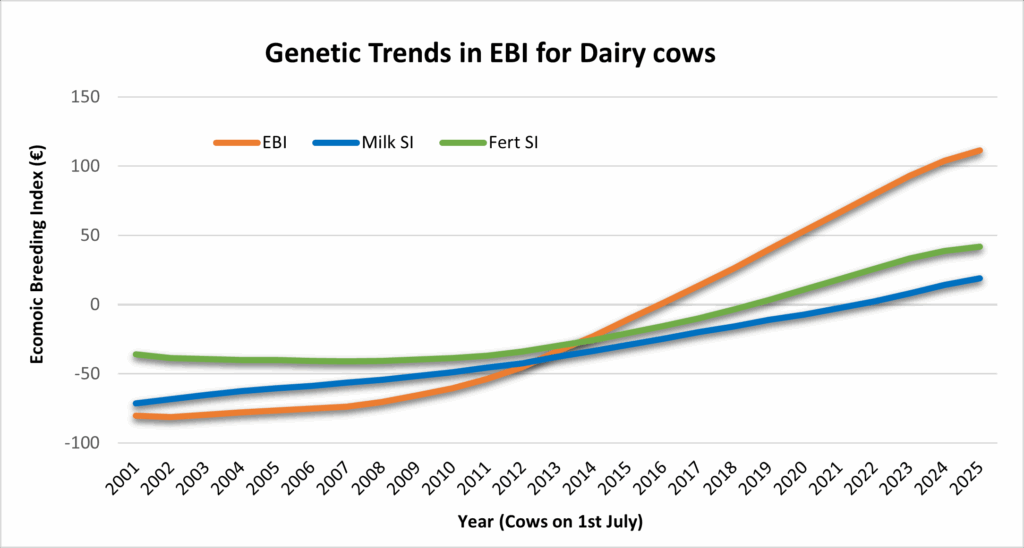
The Calving Sub-Index within the EBI is a critical component for dairy farmers aiming to improve calving ease and reduce mortality rates. This sub-index helps identify bulls that are likely to produce offspring with fewer calving difficulties, which is essential for maintaining herd health and productivity. Gestation length is also a significant factor, as shorter gestation periods can lead to earlier calving seasons and better herd management. The Calving Sub-index has consistently improved year after year, increasing in a linear fashion, with calving difficulty no longer a significant issue. This is shown in graph 2 below.
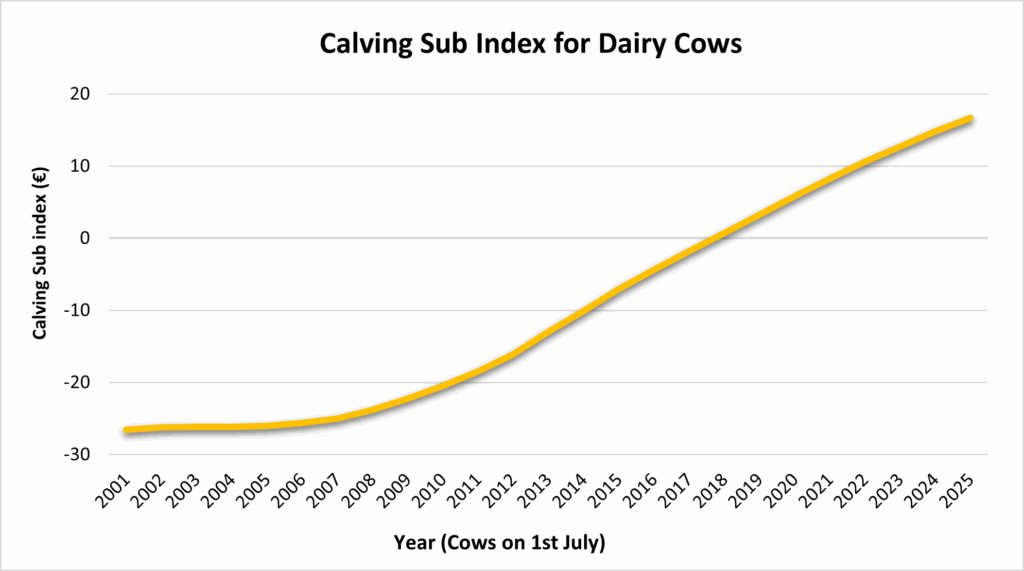
There has been a slight increase in the Maintenance Sub Index, which estimates the cost of growing and maintaining a replacement female in the dairy herd based on her genetic makeup. However, over the last three to four years, this trend has been declining. It appears that the size of cows has started to increase again in recent years, as indicated by genetic data. Regarding the Beef Sub Index, which focuses on the beef production traits of dairy cattle, such as higher carcass weights, there has been a continued decline, although at a slower rate over the last few years. Both of these genetic trends are presented in Graph 3 below.
Regarding the Health and Management Sub Indexes, both have shown relatively stable trends over the past few years, as displayed in Graph 4 below. The Health Sub Index, which aims to improve cow health and breed more TB-resistant animals, experienced a significant initial increase but has slightly declined since then. Similarly, the Management Sub Index, which focuses on the milking speed and temperament of cows during milking, has seen some improvement, but overall gains have been minimal over the last four to five years.
Regarding the TB breeding values in the Health Sub-Index, these are presented in Graph 5 below. The trend shows that from 2012 to 2020, farmers were selecting bulls with poorer genetic resistance to TB. Without breeding values, it’s like driving in the dark, you have no idea where you’re going.
TB breeding values were first published as a standalone trait in 2019. However, it wasn’t until their inclusion in the EBI in November 2022, as part of updates to the Health Sub Index, that farmers began to take real notice. Since then, the trend appears to be stabilising.
To improve TB resistance, herds should aim to use bulls with a breeding value of less than 8.5%. For more rapid improvement, bulls with values below 6.5% are recommended. Each animal’s breeding value is expressed as the expected prevalence of infection in its progeny. For example, if a bull has a TB resistance breeding value of 2%, it means that, on average, 2% of his offspring are expected to become TB reactors during their lifetime.
Summary:
The latest genetic trends, clearly confirm EBI is selecting for a more profitable and environmentally efficient cow for Irish farmers. It has delivered significant benefits for Irish farmers, with every €1 increase in EBI generating an additional €2 profit per cow per lactation. It has led to balanced genetic gains in both milk production and fertility, addressing the previous decline in fertility associated with high milk yields. The national breeding programme and genomic selection have both contributed greatly to the increased rate of gain genetic gain in the national herd.

